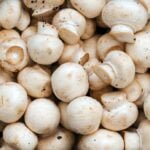How to create shimeji subatrate
Title: A Comprehensive Guide on Creating Shimeji Substrate: Cultivating Mushrooms with Pasteurized Agricultural Waste, Supplemented Sawdust, and Wood Chips
Introduction:
Shimeji mushrooms, known for their delectable flavor and delicate texture, are highly sought-after worldwide. To cultivate these prized mushrooms successfully, it is vital to have a well-prepared substrate that meets their nutritional requirements. In this comprehensive guide, we will delve into various methods of creating shimeji substrate by utilizing pasteurized agricultural waste, supplemented sawdust, and wood chips. By following these techniques, you can ensure a successful and rewarding shimeji cultivation experience that yields abundant harvests.
Table of Contents:
1. What is Shimeji Substrate?
Shimeji substrate refers to the medium that supports the growth of shimeji mushrooms. It plays a crucial role in mushroom cultivation, providing essential nutrients and creating an ideal environment for their development. The choice of substrate significantly influences the yield, flavor, and overall quality of the mushrooms.
2. Understanding Mushroom Cultivation
Before embarking on the creation of shimeji substrate, it is important to grasp the fundamental concepts of mushroom cultivation. This section will explore the general requirements for successful cultivation, such as temperature, humidity, light, and mycelium growth.
3. Utilizing Pasteurized Agricultural Waste
Pasteurized agricultural waste is an excellent option for shimeji substrate due to its abundance, cost-effectiveness, and nutrient-rich composition. This section will provide in-depth information about the types of agricultural waste suitable for shimeji cultivation, techniques for preparation and pasteurization, and the advantages and limitations associated with using this substrate.
4. Enhancing the Substrate with Supplemented Sawdust
Supplemented sawdust is a widely employed substrate ingredient for shimeji cultivation. Its compatibility with mushroom growth and potential for nutrient enrichment make it highly beneficial. This section will offer detailed insights into the importance of sawdust in shimeji substrate, guidance on selecting and preparing suitable sawdust options, techniques for supplementation, and the considerations to keep in mind when using this substrate.
5. Exploring Wood Chips as a Substrate Option
Wood chips can also serve as an effective substrate for shimeji cultivation, providing advantages such as improved water retention and better airflow. In this section, we will explore the advantages of using wood chips, identify suitable types of wood, discuss preparation and sterilization techniques, and provide essential tips for successful wood chip-based substrate cultivation.
6. Step-by-Step Guide: Creating Shimeji Substrate
Pulling together the information provided in the previous sections, this step-by-step guide will walk you through the process of creating shimeji substrate using pasteurized agricultural waste, supplemented sawdust, or wood chips. Each technique will be explained in detail, ensuring a comprehensive understanding and successful implementation.
Conclusion:
Creating shimeji substrate is an essential step in the successful cultivation of these mushrooms. By utilizing pasteurized agricultural waste, supplemented sawdust, or wood chips, you can provide the optimal growing conditions for shimeji mushrooms. Experimenting with different substrates and techniques will allow you to find the method that suits your resources and preferences best, leading to bountiful harvests of these delightful and versatile mushrooms. Turn your passion for shimeji cultivation into a rewarding and enriching experience by following the comprehensive guidance provided in this guide.




